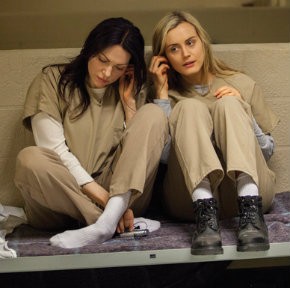Stories from inside

This is not Oz,” the prison counselor tells Piper Chapman (Taylor Schilling) during her intake interview, referring to the hyperviolent HBO drama on prison life titled Oz. Piper has just entered a low-security women’s prison to serve a 15-month sentence for carrying a bag of drug money across an international border ten years earlier. She is a blond, naive, thirtysomething Smith graduate from an upper-class New England family; she does not fit the usual image of a prison inmate.
As the counselor’s quip suggests, the Netflix series Orange Is the New Black, which follows Piper’s story behind bars (and is loosely based on Piper Kerman’s memoir of the same name), does not fit any stereotypes about prison dramas. It is so refreshing, honest, gritty, funny and moving that “prison drama” is hardly the right category.
That is not to say that the show makes light of prison or the difficulties of life “inside.” Since we first see this world through Piper’s eyes, what strikes her strikes us too: the invasion of privacy at every level, the loss of freedom (in simple things like when to shower and in more profound things like how long you can hug a visitor) and the reduction of a life story to a last name.





